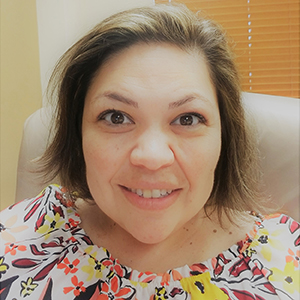Reflection on Indigenous People’s Day

When asked to reflect upon Indigenous People’s Day, previously known as Columbus Day, I approached the subject with caution. While many often mistake me for a Native American due to my high cheekbones and almond-shaped eyes, my heritage is rooted in Mexico. I am a proud blend of Mexico's diverse lineages, both culturally and genetically, reflecting a mix of Indigenous and European influences.
In my childhood, “Día de la Raza” was the term used for Columbus Day in Mexico. It emphasized pride in the dual heritage of the Mexican populace, acknowledging both the Indigenous and the European, the colonized and the colonizer, the oppressed and the oppressor. We hold both within us. School history lessons emphasized the idea that Mexico had moved beyond its caste system, advocating for a united identity as mestizo—a mix. Yet, even though our cultural heritage celebrates the ancient Aztecs, Mayas, and other pre-Columbian civilizations, Mexico struggles with prejudice against its Indigenous population. It is a paradoxical relationship: we celebrate our ancient heritage, visiting the remnants of civilizations like Teotihuacan or Chichen Itza, while also feeling shame if we look Indigenous. Colorism and racism raise their ugly head.
While researching for this piece, I learned that in 2020, Mexico renamed October 12th as “Day of the Pluricultural Nation.” This move towards decolonizing the holiday is echoed in other Latin American countries. For instance, Argentina now commemorates it as the “Day of Respect of Cultural Diversity,” while in Peru, it is known as “Indigenous Peoples and Intercultural Dialogue Day.” Here in the United States, “Indigenous Peoples’ Day,” celebrated on the second Monday of October, pays homage to the indomitable spirit, resilience, and significant contributions of Native Americans while at the same time some honor Columbus Day as part of their Italian heritage.
Here in the United States, a testament to our complicated relationship with our roots is our ongoing debate about how we should be labeled. The Latinx community often finds both "Hispanic" and "Latinx" problematic due to the overshadowing of European colonialism and the neglect of our Native American origins. This pluricultural amalgamation defines us, yet we cannot agree upon what to call ourselves.
So, as we approach Indigenous Peoples’ Day, how do we best honor it? My suggestion is to embrace the intricate tapestry of our mixed-up histories. In Clinical Pastoral Education (CPE), we urge students to navigate the duality of experiences, to understand the blend of grief and joy, or community and individuality. Let us apply this philosophy to our collective history, celebrating the myriad cultural influences that have shaped our nation. One tangible way to connect with our indigenous roots is through food. Dishes like corn, chocolate, and tomatoes are integral to our culinary traditions, especially in Mexican cuisine. By savoring these, we not only relish the food but also respect and advocate for the Indigenous communities that bring these to our tables.
Author- Bicri Hernandez
